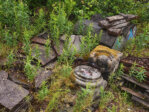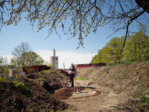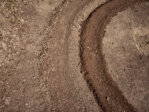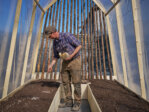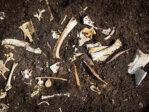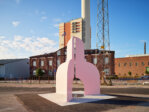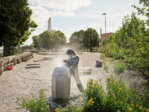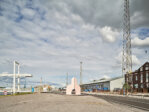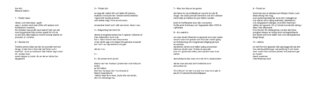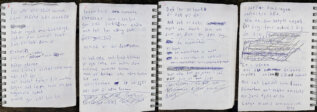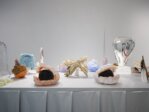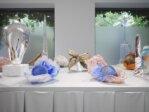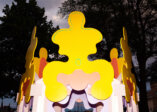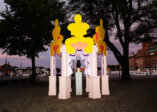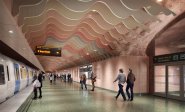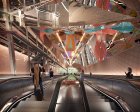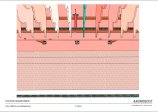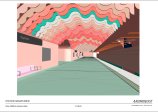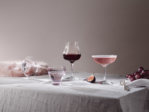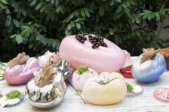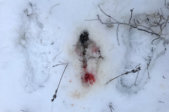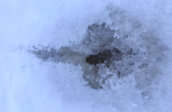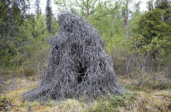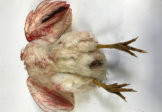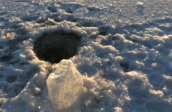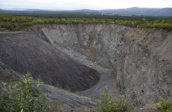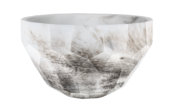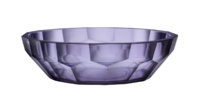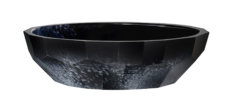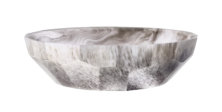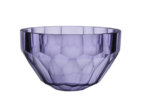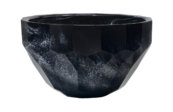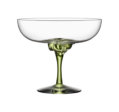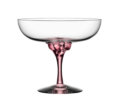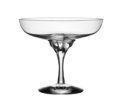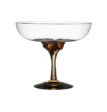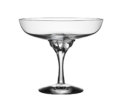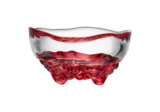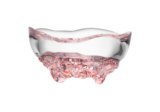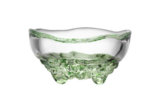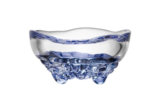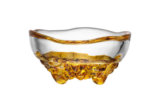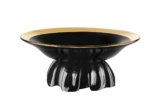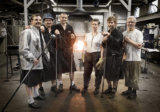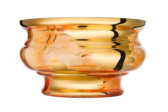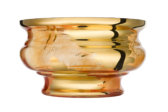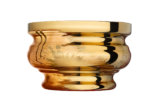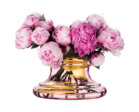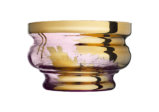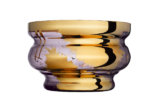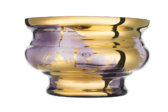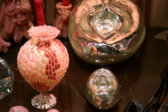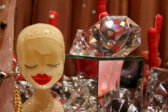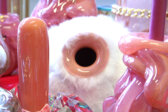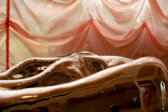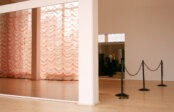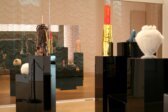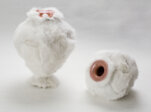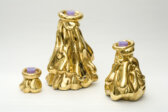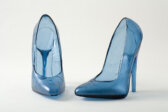











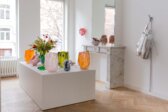














Desire Utensil Container is the first solo exhibition of Swedish artist Åsa Jungnelius at Spazio Nobile, presenting new sculptures in glass, marble and metal, as well as iterations of recurring objects in her artistic practice which have been created for this site-specific installation at Spazio Nobile. Existential questions are addressed through the materiality of glass and marble, each representing a different technical approach and state of mind. In the process, new entities have emerged into this world, some recognisable, bearing traces of everyday utensils, others ephemeral, reminiscent of the corporeal. In the centre of the exhibition a symbol of rebirth has been placed, a piece of raw purple Egyptian porphyry. The Earth / Jorden and Desire are glass sculptures formed following the movement and gravity of the glass. Jungnelius explores the limits of the material and what the human body can control. This physical process is at the heart of the artist’s practice, the transformation of a territory into an object of desire.
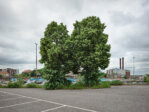
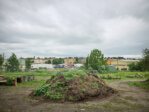
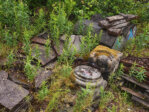
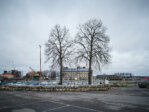
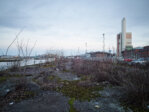
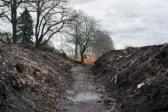
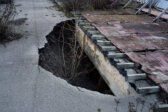
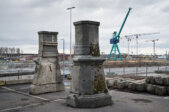
ÅSA JUNGNELIUS
INNER WORLD EXHIBITION (2020-2023)
Initiation ritual
May 2023
Södra kajen
PAVILJONG #2 - SOIL
For everything to live, everything must also die. This is nothing extraordinary. This is what constitutes life. This is the circle
Markus Valien
The circular stands for the constant cycle where nothing has a beginning nor an end but is rather a continuous closed circle of changes
Farvash Razavi Kashani
At the greenhouse on the corner of Södra kajen, somewhere between place and non-place, decay and birth, a compost pile will be blessed in a performance by Farvash and her machines. The participants are asked to participate in the preparation of fertile soil for what will then emerge as an ongoing biological and geological multidisciplinary artwork.
The soil's arable top layer is a vital resource that is being drained of nutrients by the industrial agriculture that currently supports our food production. Extraordinary circumstances require extraordinary measures. If there is no way out, we must search for a way further In(ner World Exhibition).
In her multiannual site-specific artistic work, with the site around Södra kajen and Syltenområdet (t/n a neighbourhood in Norrköping under development), Jungnelius allows new elements of the Inner World Exhibition to emerge in dialogue with the site through collaborative practice. Existing material is reactivated in new forms and both physical spaces and social structures are embraced and renegotiated. Jungnelius takes as her starting point the Konst- och Industriutställning (“the Art and Industry Exhibition”) organised in 1906 at the same location and allows her interventions to take the form of pavilions in an expanded sense. Paviljong #1 (Energies) was manifested in the interior of the Bråvalla plant in 2020. In Paviljong #2, in addition to Åsa Jungnelius, Farvash Razavi Kashani and Markus Valien will also participate. More pavilions will be opened during the autumn.






The Venus Passage is a public monument in Stockholm consisting of a two-part marble sculpture: Venus and Flora. The work was inaugurated on the International Woman's day 2023 and conjuncts the women's liberation history with science and mythology. The title refers to the astronomical phenomena The Venus Passage, when Venus passes between the earth and sun. It was first seen from the Observatory next to the sculpture group, in the 18th century and foundational for making calculations on the solar system. Venus and Flora creates it's own force field, a transforming passage pointing to a new possible future.
Donated by Interflora AB to the City of Stockholm on March 8, 2023


Today, Friday February 2023, the honorary degree of doctor of philosophy has formally been conferred upon Åsa Jungnelius by Linnaeus University. Freedom in research and training is the fundamental principle of universities. The university produces, examines, appraises and hands down culture by research and teaching. University Magna Charta, Bologna 1988-09-18
Hans Sternudd


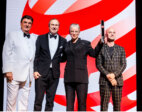
Crackle Circular – a product series featuring three vases and one bowl produced using upcycled waste glass in Kosta (Sweden) – has been awarded one of the world’s leading design awards: Red Dot Award in the category Product Design ‘Best of the Best’.
Red Dot Award – based in Germany – was introduced in 1955 and is widely recognized as one of the most prestigious international design awards. The Red Dot: Best of the Best prize is awarded by an international jury for groundbreaking design and is the highest distinction in each category.
The Crackle series, designed by Åsa Jungnelius and mouthblown in Kosta, is a tribute to cracks, beautifully preserved in glass. The mold is dug out of clay by hand and the cracked surface is formed using an old craft technique where the hot glass is dipped in ice cold water.
Crackle Circular is part of Kosta Boda’s circular glass initiative using excess waste glass from other production at Kosta Glassworks. The waste glass is first sorted by color tone before being reentered into the production of new items. As a result of the color sorting and the small bubbles that occur in recycled glass, each product ends up with a unique color ID and surface.
The result is a series of iconic products whose expression changes depending on perspective and distance, reminiscent of sculptures made of colored ice.
”I am incredibly thrilled that Crackle has received such a prestigious international award. Both form and technique stem from a shared objective with Kosta Boda to deliver an inclusive, honest, and sustainable product design that despite using traditional craftsmanship is progressive albeit imperfect up close. A great honor for a product series with a strong yet exposed personality,” says Åsa Jungnelius.
”Crackle more than personifies Kosta Boda. A contemporary product series rooted in traditional Swedish design and craft with a result that feels as conspicuous as it feels unique. A new responsible Kosta Boda design icon by Åsa Jungnelius and our experts at Kosta Glassworks,” says David Carlson, Creative Director Orrefors & Kosta Boda.
























Galleri Glas presentation at Market Art Fair 2022 will showcase new works by the Swedish artist Åsa Jungnelius.
Jungnelius’ artistic practice entails a material exploration shifting between the monumental and the social and psychologically constructed settings. Through the physicality of the object she inquires how identities and bodily desires are formed and expressed. Her interest in body and matter is centered around issues concerning the constant re-negotiation of these two entities throughout human history.
Åsa Jungnelius, born 1975, lives and works in Stockholm and Månsamåla, Sweden. She has been exhibiting regularly in Sweden and internationally since the beginning of 2000, and she is engaged in numerous public commissions such as the new public subway station Hagastaden in Stockholm, opening in 2026.
Jungnelius' breakthrough was with her early works in glass and she has since held the position as one of Sweden's leading artists within the field. Her works are represented in the collection of Moderna Museet and The Swedish National Gallery, as well as in several prominent private collections around the world.
img. 1, Queen Helmet 1
img. 2, Queen Helmet 2
img. 3, Queen Helmet 3
img. 4, Queen Helmet 4
img. 5, Queen Helmet 5
img. 6, Queen Helmet 6
img. 7, Queen Helmet 7
img. 8, Queen Helmet 8
img. 9, Queen Helmet 9
img. 10, Queen Helmet 10
img. 11, Queen Helmet (group)
img. 12, Root Ball
img. 13, Oral+1
img. 14, Gaia
img. 15, Venusfödelse (front)
img. 16, Venusfödelse (back)
img. 17, Oral+1 (detail)
img. 18, Dagger
img. 19, Open.No Balance
img. 20, Lampett Aprikos
img. 21, Oral+1 (detail)
img. 22, Gaia (detail)
img. 23, Open.No balance (detail)
img. 24, Portrait














She too, a vessel
– Masha Taavoniku
Year after year she has stood in front of the furnace in her workshop, each time performing the unwritten choreography that both facilitates and, ultimately, refining the task itself. Thirty years have passed and no day is like the last one, no movement identical with the next one. Nothing is simple but, nowadays, everything is a species of controlled repetition with a difference. In spite of the noise of the workshop there is a quietness about her and, without even thinking the thought, she never has to worry about what to do next. Like a vessel she carries in her body all of the years that have passed.
For as long as she can remember she has felt a dissatisfaction with the state of things. In her workshop she found her chance to manipulate the world. The plasticity of the molten glass challenged her sense of security at the same time that she challenged the supposed limitations of the material. Domestic wares opened the doors to people’s homes, thereby giving her the opportunity to influence the movements and interactions that take place within the four walls of a home. Without blinking she took every opportunity to create some sense of meaning. Right from her earliest work in the workshop she has made glass using moulds or free-blowing, she has worked as a product designer and created sculptures and site-specific public art. For her, glass dissolved all the previous limits of what was possible.
Taking deep breaths she now blows vases using clay moulds that she has excavated by hand. Enclosed within the cavity, each vase assumes its singular shape; rough upside-down mountain tops as though carved from dramatic mountains or rocks that often serve as a border between land and sea. Domestic wares and sculptures are united in the silence. The transformation in the workshop is from rock-hard grains of sand into an object which can be crushed into a thousand fragments at any moment. For anyone who is not an initiate this can be difficult to grasp but she can be calmed by the reminder of everything’s transience.
Her artistic work unites her with times long before she herself existed. In Pliny the Elder’s (23/24 – 79 CE) book Naturalis Historia an event is described that, in earlier times was claimed to describe the origins of glass. The written narrative deals with the manner in which an unknown number of natron merchants sailed from what is now Egypt to the coast of Palestine. Towards evening, as they began to feel hungry, the merchants lit a fire on the beach, making use of a lump of natron from their cargo to support their pan. The heat from the fire caused the natron – which is rich in soda – together with the sand to become the transparent viscous substance which, the following morning, had solidified into glass. Åsa Jungnelius is entertained by the story but she knows exactly the temperature necessary for sand and soda to fuse and become glass. She knows that a modest campfire on the beach would not create the necessary heat. In all probability the discovery of glass was a serendipitous event related to ceramics or to the production of metals; a process that later came to be imitated. But the fact remains that no one knows exactly how or when the first glass was produced.
Outside the workshop spring is in the air, trees are in bud and her body aches from the arduous work. One by one she carefully dips the hot, heavy vases into the icy water whereupon the surfaces crackelate. The shiny vases’ seductive characteristic and the cracks that break the light testify to beauty and to the closely related fragility.
From her stomach the colours are produced that have become characteristic of her art: billowing; sharp and pale nuances of green, blue, yellow, orange, violet, pink and white.
In the hot workshop she wanders slowly over miles of beaches while the waves erase her footsteps in the sand. On her journey she blows shells filled with pearls, lava-like candlesticks in bright colours, silver-coloured objects and sculptures. She knows that not everyone can see this but the glass carries with it everything she is and does; and therewith hundreds of years of time past. At any moment the vessel can be broken. “Precisely for that reason” she thinks as she takes another deep breath and blows into the glassmaker’s pipe.




In this walk along the paths of Capri facing the blue immensity of the Bay of Naples, Spazio Nobile explores the stratifications of ancient soils through the creations of Italian architect and designer Marialaura Irvine. Originally from the area around Oplontis, Marialaura has been immersed in the archaeological culture and the mysterious atmosphere of cities such as Pompeii and Herculaneum, which were buried in the 79th eruption of Mount Vesuvius and are now on the UNESCO World Heritage List. It is in Oplontis (Torre Annunziata) that beautiful floors and wall paintings have been preserved under the lava fragments and volcanic sand. Marialaura revisits the beauty of these ancient pavements through two new creations for the gallery: a limited edition rug “Oplontis”, woven in pure wool and made in Sardinia, and a collection of terracotta bespoke furniture “Passeggiata”, for indoors or outdoors, inspired by the pattern of pine needles that cover the shaded paths of Capri. These steles also serve as an exhibition thread among the artists of the gallery. In search of an awakening of the senses in symbiosis with the earth, the sky and the sea, Spazio Nobile thus draws a singular landscape around these creations by Marialaura Irvine, impregnated with Italian culture, between the tradition of age-old know-how and contemporaneity. The space overlooking the cloister garden and the park of the Carthusian monastery facing the Faraglioni is composed of aerial furniture in Urushi paper and lacquer “Paper Pleats” by Pao Hui Kao (TW) and sculpted and enamelled candleholders by Bela Silva (PT). There is also a dialogue with the large blown glass shells “Queen Helmets” by the artist Åsa Jungnelius (SE), the molten glass sculpture vases “Diatomée” by Garnier & Linker (FR) and the “Echinus” and “Ostreum” by Katherine Huskie (UK), which evoke the presence of a marine world on the island. The table “I0” by Philipp Weber (DE) made of handmade laminated glass, the new Collage Outdoor Totems and photophores by Kiki van Eijk (NL), the “Fossilized” coal seats by Jesper Eriksson (SE/FR) reinforce the presence of the arts of fire. Within the Stanza 21, “LVNARI, Blue Moon”, a pigment print photograph on cotton paper by Jörg Bräuer (DE), the “Whispering Vessels” by silversmith Adi Toch (IS) and “White Moon” drawn in BiC ink by Tomáš Libertíny (SK) connect the eye to the milky nights and “Matin ensoleillé” (Sunny Morning), a colorful gouache by Bela Silva, to the solar energy of Capri.





De bästa idéerna föds i informella sammanhang
Platser påverkar och ger intryck. Konstnärer påverkar och ger avtryck. Vad händer om man sammanför dem? Ihop med andra konstnärer, låter dem få verka på en specifik plats eller i ett särskilt landskap över ett år, genom en sommar eller en vinter?
-Konstnärer färdas redan kors och tvärs över världen genom olika kulturpolitiska agendor, vad gör detta projektet för skillnad?
I Residence-in-Nature är uppdragsgivarna konstnärerna själva. Det är vi som skapar ramverket och allt formas utifrån de idéer som utvecklas längs vägen. Projektet är en enda lång fältstudie av plats, av varandra, av kollektiv kontra individ, av projektidé och konstnärskap. Det är komplext, roligt och konfliktfyllt om vartannat.
Vi visste att vi ville till norr. Vissa hade sug, andra var nyfikna, någon hade bakgrund där, för någon annan var det inte norr utan söder. Platser är som människor, det är olika avstånd till dem beroende vad man har för relation till dem. För att en relation skall uppstå, så måste ett möte ske och sedan måste det ofta byggas och jobbas på. Det har vi gjort. Men först blev vi förälskade. I Lainio. Som, blev vår start, vårt hjärta. Samma var det nog för Klemens Olofsson som på 1650 talet när han som första fasta bosättare flyttade till platsen. Lainio bär spår från 7000 f. Kr och är den äldsta kontinuerligt bebodda bosättningen i Torne lappmark. Det är en plats på gränsen till subarktiskt landskap och den nordligaste platsen i det som kallas för Tornedalen. En gränsplats med en lång historia och många språk. Ett landskap där högresta granar börjar kröka sig och den norrbottniska floran övergår till en fjällflora.
Vid Lainioälvens strand ligger Hans mammas hus, där hittade vi vår bas. Ett Per Albinhus från
40-talet och som i sin estetik genomgått varsamma förändringar fram till vår tid, där den mjuka pastelliga färgsättningen som är så vanlig i Laestadiansk kulturbygd var fylld av floror, biblar, gamla redskap, ranor, och en gammal köksklocka som taktfast mätte tiden i kapp med microvågsugnens plingande.
Vi var besökare och rörde oss lika klumpigt nyfiket, som tyst från mammas hus likt ringar på vatten och till platser med namn som; Kaltiomaa, Parakaakurkio, Kitkiöjärvi, Neitijärvi, Pessenki, Juntikka, Vivungi, Nyttysari, Kuokso, Oksajärvi…. I ett landskap bland Mjölkört, Rölleka, Rödblära, Polargullpudran, Kartlavar…. Bland människor som talade samiska, meänkieli, finska och svenska. Det fick oss att tänka på institutionen och historieberättandet, på språkets mentala rumsordningar, på ritualer som ett socialt rum, på bygdegårdstraditioner, på vinterns, mörkrets, isen och snöns historiska och samtida betydelse och på gränser och system, och på hur naturen kan verka som metaforer för mänskliga tillstånd, då vi vandrade, körde omkring, talade och arbetade i dessa rum och landskap.
Vi var konstnärer, slöjdare, fotografer, bönder, formgivare, glasblåsare, skulptörer, scenkonstnärer, målare och keramiker från Tromsø, Luleå, Boden, Månsamåla, Kiruna, Stockholm, Østfold, Gissamåla och Oulo, från Norge, Sverige och Finland.
En geografisk plats långt borta, blev nära, något visades på Marttigården, något annat på Norrbottens Museum. Platser förändrar sig, verk fortsätter spridas över större geografier. Det du nu har i din hand är en kartläggning, en flora över en plats, en process, en relation och ett minne. Så här tror vi att det var, att det började…
Hans Isaksson, Åsa Jungnelius och Lisa Torell
Konstnärliga ledare Mammas Hus i Lainio
#Residence-in-Nature 2017-2021



100 YEARS OF CONVIVIALITY: what you can see is what you can imagine. The show takes place in the grand skylight halls at Kunstnernes Hus and we are delighted to warmly invite you all.
This exhibition is a prompt.
This exhibition is a map.
This exhibition is a conflict, a chorus.
This exhibition is a story of struggle and conviviality, of disagreement and discourse, of gossip and cheap wine in the early hours, of heartbreak and collegial banter, of pushing each other to be better artists, and challenging what it means to be a good friend, citizen, and human in the world.
This exhibition is unfair and lacking and full of holes. It covers a lot but omits much more. It was made by many, in celebration of even more.
This exhibition is for artists eternally young and for everyone who believes that making art, to reimagining world, is a shared endeavor.
This exhibition celebrates when, on 28 October 1921, a group of artists met in a bar in Oslo and founded a social club that would change the fabric that upholds artistic life in Norway, and which continues to mend and weave that fabric, so it never wears thin.
*
Imagination is contextual. Imagination is produced and maintained by interaction with people and things around us; it thrives on what we experience others being able to imagine, and on what we can communicate as imaginable to each other. Imagination is collective and social. Only through imagining together with others, can we push our capacity to imagine.
— Katya Sander
what you can see is what you can imagine consists of historical works on loan from museums and collections across Norway, new commissions that actively converse with the past, and new works that discuss our present and possible futures. The title of the show is kindly lent to UKS by artists Katya Sander and Mo Maja Moesgaard.
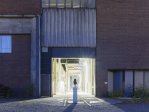
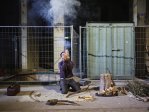
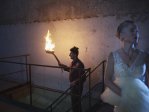
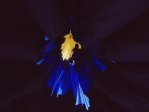
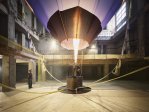


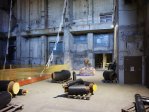

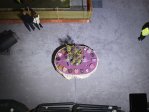
Inre Världsutställningen 2020-23,
Paviljong 1: Energier av Åsa Jungnelius
Bråvallaverket som spelplats utgör ett monument över den industriella revolutionen och en inte alltför avlägsen epok där gamla prioriteringar styrde över samhällets utveckling och användande av resurser. Jungnelius tar fasta på platsens historiska betydelse som oljeeldat elkraftverk men vänder blicken bort och synliggör i stället alternativa energier. Välkommen att beskåda och ta del av solmoderns färd mot himlarna.
Jungnelius har tagit avstamp i den konst- och industriutställning som anordnades 1906 i samma område och låter sina nedslag ta formen av paviljonger i utvidgad bemärkelse. Temporärt och permanent som fysiska gestaltningar och kollektiva handlingar reflekterande den pågående samhällsomvandlingen parallellt med platsens transformation. Paviljong 1 inleder ett flerårigt konstnärligt arbete kring södra kajen och Syltenområdet.
Medverkande:
Åsa Jungnelius, konstnär
Markus Vallien, Konstnär
Mirja Bozarth Fornell, floristdesigner
Peo Olsson, fotograf
Jun-Hi Wennergren Nordling, curator
Linus Elmes, konstnär
Erik Nyberg, ballongexpert
Beatrice Bärgård, projektassistent
Kim Almgren, projektassistent
Mattias Åkeson, intendent offentlig konst
Jonas Williamsson, grafisk formgivare
Tack till EON, ED Bygg och Per Arne Terrs.
The first part of an Inner World Exhibition
24 -25 September 2021
“Dig where you stand”, as the saying goes. In the form of an archaeological palimpsest, Åsa Jungnelius allows remnants from different eras to coexist, be exposed, examined and layered to then add anthropological, performative, political and aesthetic elements in a Gesamtkunstwerk.
Jungnelius refers to the events that took place over two days in the decommissioned Bråvalla plant in Norrköping’s inner port as Paviljong #1 (“Pavillion #1”). With this she marks the first part in a series of temporary or permanent manifestations that will take place, all revolving around the effects and conditions of the extensive urban development project in several stages underway in Norrköping under the auspices of the municipality. The context becomes an important part of the work.
The reconstruction of the inner port is a significant signalling project and this is clearly evident in the way Motala ströms’ estuary in Bråviken is communicated as the gateway to Östergötland, the place where the Baltic Sea meets the inland, in the municipality’s own communication canals. The vision, which is sold to us with its graphic profile and copy, speaks of a vibrant, innovative neighbourhood that offers a waterfront location, relaxing green walkways as well as exciting architecture. The development of the first phase is initiated in collaboration with nine different construction and housing corporations, and the municipality is organising special land allocation competitions to attract businesses to the area. When completed, there will be 3000 new apartments alongside offices, shops, new parks, quays and canals. This is the dream of the future.
In a project of such magnitude, an ambitious art program consequently unfolds following a tried and tested pattern. For an artist to embark on a project within such a program presents a variety of challenges that Jungnelius chooses to subtly address and include in her work. The guidelines set out are subject to the ambition to reaffirm the larger development plan through a public art commission which “genuinely interacts with and responds to Inre hamnen (“the Inner Port”), its heritage, ecology and history”. The artistic challenge is to relay something relevant about the context while maintaining one’s integrity. Aware of this, Jungnelius turns her gaze towards the extensive urban transformation in Norrköping at the turn of the last century, when, amongst other things, the tramway was built as well as how it was manifested.
When it was decided at the twentieth Swedish agricultural meeting in 1905, through the initiative of Norrköping's Factory and Craft Association, that an art and industry exhibition would be held in the city the following year, it followed an established pattern of an almost century-old tradition that would culminate in the famous Stockholm Exhibition in 1930. It too represented and maintained the idea of a distinct national identity, but as a result of the dissolution of the Union between Sweden and Norway and the death of Scandinavianism, there was a shift away from the vision of political and military cooperation. Instead, the emphasis was on cultural exchange with the aim of manifesting the progress of modernism through the presentation of industrial and social engineering across national borders.
At the 1906 Norrköping Art and Industry Exhibition, technical achievements in monumental format for power transmission were exhibited alongside - and in parallel - with textiles and industrial crafts, but also extensive photography and art exhibitions. In retrospect, the entire exhibition was an iconographic description of the societal transformation taking place at the turn of the previous century. Many of the exhibited inventions - steam turbines, electric cars and cannons - were remarkable and signalled a new era and a new society.
In the art section of the exhibition, however, there was a conservative hegemony of academic painting, with no trace of the movements that were to reformulate the meaning of art in the coming years. Marinetti, Boccioni, Russolo and Carrà wrote the Manifesto of Futurism in which they declared Venice a cloaca maxima. A powerful reckoning with the impotence of the previous centuries' voluptuousness and a visionary desire to
instead give way to metal bridges reaching into the sky and the mighty geometry of smoke-crowned factories. Around the same time, Braque and Picasso began experimenting with Cubist painting, where, by opposing the idea of depicting nature, they paved the way for both Dadaism and Surrealism.
Many of the artistic movements of the early 20th century serve as the conceptual basis for several later artistic practices that have in turn influenced and enabled Åsa Jungnelius' position in the contemporary world. When she now takes as her starting point and connotes the aforementioned 115-year-old Art and Industry Exhibition, she in a way closes the circle with a significant performative and interactive installation work that exposes the fact that art today has completely different possibilities than they had at the site in 1906, but also that today we are once again on the threshold of a socio-economic transition.
As I mentioned in the introduction, Jungnelius’ Paviljong #1 is a comprehensive artwork. Through performance, sculpture and narrative, she explores a range of alternative energies and strategies that have been actualised in the Anthropocene. Today, the role of industry along with the dream of eternal growth is reduced, heavily criticised and questioned. The belief in the future that existed at the beginning of the last century stands in sharp contrast to today's climate threat and humankind's survival.
Therefore it is within the framework of this multi-layered background, extended in time, that Jungnelius has temporarily moved into the abandoned premises of the Bråvalla plant. The almost cathedral-like room was originally built as an enormous oil-fired power station, but in Jungnelius' reenactment, it becomes a stage for an interactive and symbolically charged drama in which the audience is invited as participants rather than observers. Abandoned district heating pipes, together with other interventions and invited collaborators, form a kind of scenography for the narrative Jungnelius has directed, and in which fire as a metaphor for life and the sun plays the main role.
Invited by Jungnelius, Markus Vallien tells us in a performance about the birth of the sun and how the particles thrown into the universe came to form the Earth. At the same time, Vallien is using an ancient method to make a fire, which is then passed on to light the gas flame of a hot air balloon.
A hot air balloon is an aerostat, a vessel whose weight is equal to or less than the weight of the displaced air and which is characterised above all by its 'static' relationship with the atmosphere. Thus, in contrast to the modern industrial history Jungnelius reflects on, and which is based on dynamism, transformation and the extraction of finite resources, a hot air balloon operates more in harmony with the atmosphere.
Inside the dimly lit Bråvalla plant, the hot air balloon is an unimaginably floating and semi-transparent body through which the heat and light is spreading together with the acoustics and the roar of the burning flame as it rises towards the ceiling with its passengers. Just like the balloon leaves the ground, Jungnelius leaves all rational explanatory models behind in a crescendo.
The repetitive act of ascension, like the sun's passage across the sky, becomes a cyclical incantation. Here, the door is ajar to contemporary shamanistic models of imagination where the sight of a hot air balloon in a dream represents a spiritual awakening, an openness to necessary changes and a guide to new possibilities, or to classical dream interpretation where the hot air balloon is a symbol of freedom or liberation and a journey to new heights based on healing and peace. Somewhere here, Jungnelius also dissolves the boundary between artwork and reality, between the interior and the exterior, between realpolitik and spirituality, and applies these connotations and references as tools in a symbolic act of resistance against all that could have been predictable in a commissioned work, leaving us naked before an uncertain future.
L.E
Bernshammar, November 2021







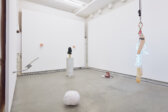
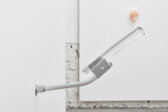

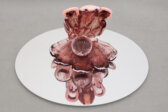
In an intimate setting resembling a chamber play, Åsa Jungnelius brings together materials charged with varying meaning and value. The exhibition presents new sculptures in marble, bronze, brass, nylon, neon, old wood and glass creating a dense narration linking the infinity of the stone with the ephemeral late capitalism of the current. Traces from the antiquity meets Jungnelius’ distinct expressive materiality in this open ended drama.
Jungnelius’ artistic practise entails a material exploration of the movement between the monumental and the social and psychological constructed setting that make up the surroundings. Through the physicality of the object she inquires how identities and bodily desires are formed and expressed. Her interest in body and matter is centered around issues concerning the constant recreating and re-negotiation of these to entities throughout human history.
Åsa Jungnelius b. 1975, lives and works in Stockholm and Månsamåla, Sweden. She has been exhibiting regularly at national and international art galleries and institutions since the beginning of 2000 as well as being the initiator and founder of collaborative projects Residence-In-Nature, WeWorkInAFragileMaterial and LASTSTUDIO. Currently she holds the position as senior lecturer at Konstfack University for Arts and Crafts. Jungnelius is frequently engaged in public commissions of which one is being selected to create the new public subway station Hagastaden in Stockholm, opening in 2026. She is famous for her works in glass and between the years 2007-13 she was in house artist at Kosta Boda.
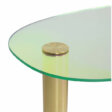
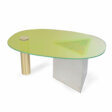
“THE IDEA FOR THIS TABLE sprung from a huge interior commission I’m working on — an entire new subway station that I’m decorating in Stockholm, the entirety of which is a celebration of motherhood. It’s called the Seashell — a monumental cavity, a tribute to the power of the void. In this station, I have created a crystal cave through which travelers will pass. It’s a kind of kaleidoscope that dissolves the spatial experience. One of the legs supporting this table is a triangle which alludes to this crystal cave with its illusion of an eternal abyss. It’s a first for me that an idea has appeared like this, in the form of a table. The table is really a play with eternal geometric shapes, with the oversized circular brass leg and the super-ellipse of the tabletop. I like the superellipse, which is a shape based on mathematically calculated curves. I’ve also drawn inspiration from Stockholm’s modernistic Sergels torg square from the late sixties, the design of which largely builds on the super-ellipse.”
ÅSA JUNGNELIUS is a visual artist who investigates physical and metaphysical dimensions through her own personal material language. In her work, Jungnelius crosses boundaries of art, design and functionality. Åsa Jungnelius is represented with her art and with site-specific installations in esteemed museums and institutions in Sweden and internationally. Since 2016, she has been working on the art work for Hagaplan, an entire new subway station in Stockholm, estimated to open in 2028.
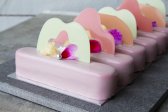
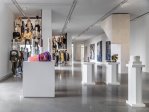
January 30, 2020
On International Women’s Day, Sunday March 8th, the new exhibition Signature Women – 100 Years on the Swedish Art Scene opens at Artipelag. Some 350 works by about fifty Swedish female artists will be presented, well-known as well as previously marginalized names, active from the previous century up to current day.
The selection comprises painting, sculpture, textile, crafts, drawings and graphic prints, photography and film. The artists will be presented based on the century they primarily were productive in, and selection is based on how their art reflects the prevailing social climate at the time.
– A little while ago, I was commissioned by a Norwegian art museum to propose names of Swedish artists to a Nordic art collection. To refresh my knowledge, I turned to art history. I got reminded of how flagrant the male predominance was in most descriptions, the ratio of male and female artists respectively was 95% male and 5% female, regardless of whether the book in question was by a male or female author. It was against this background the idea to an exhibition highlighting this disproportion came about, says Bo Nilsson, Director at Artipelag.
The term Signature Women is an onset to reflect the shifting over a hundred years, when female artists have gone from being dispatched to artistic obscurity to today’s loftiness.
– Our ambition is not to conjure up an ultimate picture of art history, but we chose to present a humble historical writing, rather a topic for discussion than a definitive statement, says Nilsson.
Participating Artists:
Mamma Andersson, Ann-Sofie Back, Idun Baltzersen, Emma Bernhard, Helene Billgren, Monica Bratt, Vivianna Torun Bülow-Hübe, Barbro Bäckström, Nina Canell, Agnes Cleve, Siri Derkert, Nathalie Djurberg & Hans Berg , Cecilia Edefalk, Inger Ekdahl, Marie-Louise Ekman, Estrid Ericson, Carolina Falkholt, Eddie Figge, Randi Fisher, Maud Fredin Fredholm, Leonie Geisendorf, Petra Gipp, Denise Grünstein, Annika von Hausswolff, Susanne Henriques, Hertha Hillfon, Sigrid Hjertén, Åsa Jungnelius, Eva Klasson, Hilma af Klint, Greta Knutson, Klara Kristalova, Lotte Laserstein, Maria Lindberg, Tuija Lindström, Tyra Lundgren, Rita Lundqvist, Eva Löfdahl, Maria Miesenberger, Ann-Marie Forsberg + Marianne Richter + Barbro Nilsson (Märta Måås AB), Gunvor Nelson, Vera Nilsson, Signe Persson-Melin, Siri Rathsman, Ingegerd Råman, Astrid Sampe, Lena Svedberg, Nell Walden, Jane Wåhlstedt (Laholmskeramik), Christine Ödlund and Barbro Östlihn.
The curator team consist of:
Bo Nilsson, head of the Art Dep, Frida Andersson, Jessica Höglund and Iselin Page, curators, Kristina Lindemann, curator of pedagogy, chief technician Johan von Geijer and graphic designer Micaela Wernberg.
Catalogue:
In connection to the exhibition, a catalogue will be produced designed by Samuel Lind, text by Marika Bogren and Bo Nilsson as well as artist biographies by Bo Nilsson, Frida Andersson, Jessica Höglund, Kristina Lindemann and Iselin Page.
Contributions to a Library:
Visitors are encouraged to give their view on the selection by donating books and art catalogues with female artists they think should have been represented in the exhibition. This library will hopefully grow during the exhibition and constitute as study material for our visitors. The collected books will then be included in Stockholm Museum of Women’s History and building up a library on women history.



När är mattan inte längre ett bruksföremål, utan ett objekt? Kan föremål som skapats för ett tydligt ändamål - som att ge värme till dragiga golv - samtidigt vara bara sig själv, ett konstverk i sin egen storslagna kraft? Med en stark betoning på kropp och själ, färg och form, skapar Åsas konstnärliga vision och symboliska estetik en känsla av kvinnlig styrka i varje objekt hon skapar, och i varje hem det flyttar in till.
”Mitt arbete är ofta materialburet och rör sig mellan interiören till ett monumentalformat där det materiella språket undersöker relationen mellan våra kroppar, objekten vi omger dem med och olou de tillsammans agerar i.”
”Snäckan och Munnen är två symboler jag ofta återkommer till som en representation av hålet. I min konstnärliga praktik är väldigt intresserad av att förstå hålet och hålrummets kapacitet.”
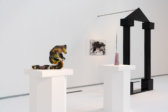
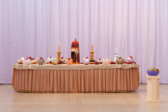
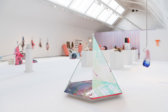
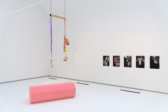
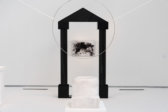
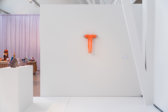
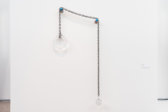
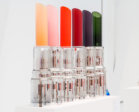
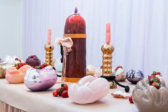
A bowl, a candlestick or a pair of shoes are seen in general as being there for us. They normally have a certain function and incite our sense of beauty. We cast out or reject the ugly objects. Perhaps we laugh at them.
Åsa Jungnelius’ art triggers an entirely different process in us. Objects undermine authorities and establish new relationships. The question of function still arises, but it is quickly subordinated to the demand that the objects place on us. Many of these objects seem to have come into being with a clear purpose. A bowl for dipping crisps in or a candlestick for lighting up the room. But they are also at the same time simply themselves – artworks in their own right.
The encounter with Jungnelius’ work can therefore be a little confusing at first. The pieces unhinge us from our habitual representations and we are forced to become agents. The objects gaze back at us, as if they want to make us think about who we are, how we relate to ourselves and to the world surrounding us.
The works in the exhibition were crafted in Småland’s Kingdom of Crystal. Glassworks are traditionally seen as masculine environments and Jungnelius, with her art, comments on the areas’s multifaceted industrial history. At the same time as there is a whole culture around the production of glass objects, the raw materials can be found in the wild. Glass is a material at once heavy and volatile, sharp and soft, solid and fragile. Still Jungnelius knows how to extend the possible uses of glass by placing it in relation to other materials.
In this exhibition Jungnelius exhibits works which tell us about the society we live in through a combination of processed and everyday materials. Bone, wood and fur meet glass, marble, and metal to create fetishized handmade objects containing stories. The sculptures proceed on a spiritual journey through an abandoned well in Mosahultagöl in Ljuder’s parish in Småland, a place that Åsa has returned to during a period of several years within the frame of the elastic, nomadic site-specific art project Residence-in-Nature.
In Jungnelius' assembled objects, different time periods and places meet: town, industry, forest, equality, lust and struggle. But the one material reappearing in each object is glass. Surrounding us every day are enormous amounts of this transparent surface, and everywhere it offers us a transmission from vision to reverie.
Text by Peter Bergman
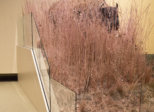
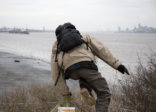
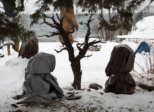
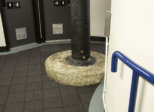
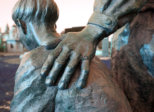
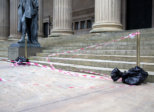
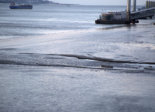
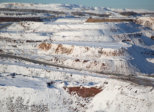
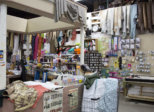
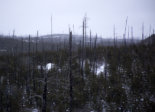


Nya Småland has co-orginised an exchange between Kultivera in Tranås and the The Soap Factory in Minneapolis. As a part of this, four artists from Minnesota have traveled to Tranås and two artists from Småland have been in Minnesota. Filippa Nilsson Kallhed visited former Swedish immigrant settlements and Åsa Jungnelius followed the footsteps of the beaver trappers in Northern Minnesota and research the beaver skin trade.
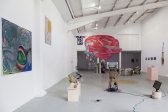
The Immeasurable will be a group exhibition of over twenty artists from across the United Kingdom, Sweden and Australia. The focus of the exhibition will be to create a site for experimentation alongside the commissioning of twenty works in relation to a curatorial and practice based research on care, female knowledge, slow practices, belief systems, healing and sharing.
Exhibiting artists: Christine Binnie, Blue Firth, Ludovica Gioscia and James Stopforth, Milo Creese, Candice Jacobs, Madalina Zaharia, Ross Taylor, Anna Von Hauswolff, Linda Persson, Sophie Eveleigh, Todd McMillan, Phillipa Stafford, Rachel McRae, Verity Birt, Lucy Stein, Fay Zmija Nicolson, Adam Bridgland, Åsa Jungnelius, Helle Kvamme, Johanna Gustafsson Fürst, Bridget Currie and Tamara Henderson, The Feminist Library.
Artists featuring in live events, film screenings/ workshops to include Joseph Griffiths, Dominika Kieruzel, Ingela Johansson, Signe Johannessen, Maya Deren, Jean Painleve, Milo Creese, Rachel McRae, Holly Slingsby, Phillippa Stafford, Victoria Rance, Ulrika Sparre, Ross Taylor, Madalina Zaharia and more.
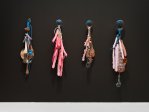

Still Burning är ett större tematiskt utställnings- och researchprojekt om spåren av feminism bakåt i tiden och fram till idag med utgångspunkt i året 1919, då Sveriges riksdag antog en proposition om rösträtt för kvinnor i riksdagsval. Utifrån temat reflekterar medverkande konstnärer och konstnärsgrupp, nytänkande och radikala budskap i dialog med arkiv, livsberättelser och iscensättningar. Närvarande är referenser till 70-talets frigörelse, kolonialismens inverkan och uppgörelse mot patriarkala strukturer såväl som vad det betyder att vara kvinna. Tillsammans bildar de en spännande relief till den svenska och internationella utvecklingen såväl som till den feministiska samtidskonstens position idag.
För första gången i Sverige presenteras nya konstnärskap för en svensk publik med konstnärerna Lady Skollie och Mary Maggic. Speciellt för utställningen produceras också en platsspecifik muralmålning av storskaliga mått. Skiftningar med frågeställningar, estetiska avvägningar och materialval över de olika generationerna, visar tillsammans hur konstnärer arbetar och engageras för samhällsförändring såväl som hur yrkesrollen konstnär har förändrats över tid för kvinnor. Utställningen ger en inblick av både svenska och internationella konstnärskap som bidragit till att forma vår konsthistoria.
Titeln Still Burning beskriver ett tidsintervall på 100 år där det förflutna fortfarande är angeläget och synliggör de normer och värderingar som format och begränsat flickors, kvinnors och transpersoners livsvillkor. Likaså samtidens politiska klimat och attityd gentemot kvinnor med fokus på synliggörandet av motståndets mekanismer och förskjutning av makt och kontroll. Verken öppnar upp för möjliga ingångar till en fördjupad diskussion om konst, kön och genus såväl om framtida feministiska strategier om sexualitet och makt där publik bjuds in till reflektion och debatt.
Utställningen produceras av Varbergs konsthall och cureras av Giulia Casalini och Camilla Påhlsson. Casalini är baserad i London och Påhlsson arbetar som konstnärlig ledare för Varbergs konsthall. Värdefullt samarbete med Folkrörelsernas arkiv i norra Halland har bidragit med historisk kunskap om Varbergs kvinnorörelse såväl som om den lokala politiska organiseringen med flera betydande inlån från arkiv och samlingar. Till utställningen planeras även ett publikt program av föreläsningar och allmänna visningar som ger fördjupning av utställningens tematik och konst.
Medverkande konstnärer: Heba Y Amin, Anna Uddenberg, Lady Skollie, Åsa Jungnelius, Mary Maggic, Kristina Johansson, Nilbar Güres, Sisters of Jam, Saadia Hussain.

Porten, 2019 av Åsa Jungnelius. Porten är ett platsanpassat konstverk som även fungerar som en entré till Kivik Art Centre. Den kulissliknande porten bjuder in besökarna att träda in i en grotta, eller som till en hemlig gömma. De olika färgerna och formerna associerar till vår egen identitet och vårt kulturlandskap vi har i vår närhet. Jungnelius arbetar med hålet som form likt en motvikt till de gängse fallosliknande skulpturer som finns i det offentliga rummet.
Detta konstverk är temporärt utställt för säsongen 2019.
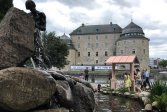
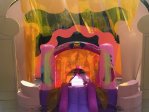
The constant battle
Depicted as a well and with a common garden with potatoes, The constant battle works as a pendant to the permanent sculpture "Liberator" from 1914 by Karl Hultström.
Material: Soil, water, potatoes, coppar, wiid pulp and dolomite marble*.
Mother
Aesthetic positioning describes the dream of another world and
has been used by those who have / had access to funds and power.
"The mother" is an elastic monument that protects an equal
future where everyone owns the right to their own body and sexuality.
Material:water, plastic in yellow, Papier-maché, wood, inflatables and paint.
*dolomite marble, 2 miljon years old from Glanshammar.
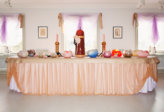
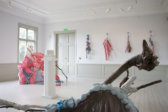
Welcome to Fullersta Gård and Åsa Jungnelius’ exhibition Artefacts
The first work by Åsa Jungnelius that I ever saw was a chandelier in pink strung-glass. It was at once alluringly beautiful and slightly vulgar, and it woke in me some desire to possess it. But at the same time it reminded me of the decorative objects at my Italian grandmother’s home: how I walked around and fiddled with them, investigating what they wanted of me. Like the little dog in green crystal. Åsa’s art took me back to that space.
A bowl, a candlestick or a pair of shoes are seen in general as being there for us. They are normally to have a certain function and incite our sense of beauty. The green dog is just supposed to be sweet and pretty. We cast out or neglect the ugly objects; perhaps we laugh at them.
Åsa’s art triggers an entirely different process in us; in it, objects undermine authorities and establish new relationships. The question of function still arises but it is quickly subordinated to the demands that the objects place on us. Many of these objects seem to have come into being with a clear purpose: a bowl for dipping crisps in or a candlestick for lighting up the room. But they are also at the same time simply themselves, artworks in their own right.
An encounter with Åsa’s work can therefore be a little confusing at first. The pieces unhinge us from our habitual representations and we are forced to become agents. The objects gaze back at us, as if they wanted to make us think about who we are, how we relate to ourselves and to the world surrounding us. It is as if her artefacts knew that we are to see them. They speak a language other than our own, but they lift us from our routines, as if it were them who are the actors and we the objects of study.
The works included in the exhibition were crafted in Småland’s Kingdom of Crystal. Glassworks are traditionally seen as masculine environments and Åsa comments with her art on the area’s industrial history. And the history of glass is a multifaceted one. At the same time as there is a whole culture around the production of glass objects, the raw materials can also be found in nature. (A lightning can produce glass by vitrifying sand.) Glass is a material at once heavy and volatile, sharp and soft, solid and fragile; and still Åsa knows how to extend the possible uses of glass by also placing it in relation to other materials.
At Fullersta Gård we encounter a number of assemblages stemming from an elevated, spiritual state of the senses: A well that perhaps contains a truth about our past, our future or ourselves, a symbolic portal, the entry into another reality.
The set table presented on the second floor is to be considered as a social act. I myself imagine that Esther, or as those who work here call her, ‘the house ghost’, is specially invited to this party. Esther was a maid at Fullersta Gård more than a hundred years ago and has been seen around in the house. A table is set for us, but when the exhibition closes for the evening the objects stay in place and wait for the nocturnal guest of honour.
Peter Bergman
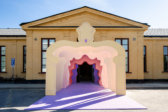
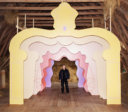
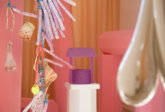

Public Luxury is an exhibition about architecture, design and the struggle for public life. Large-scale commissions, installations and projects inside and outside of the museum will give visitors an insight into the struggles and successes of design as it faces many of the challenges currently facing Sweden. From hot dog kiosks to public monuments, and from video games to public campaigns, the works reflect the breadth of the contemporary debate about Swedish cities.
The title Public Luxury sounds like a contradiction, but recognizes that everything in the public realm exists for more than merely functional reasons. Every kerbstone, bench, bollard, station sign, public toilet and street is part of the character and identity of a place.
All the works in Public Luxury, many of which were made for the exhibition, share the ambition to tell a story about public life today. Architects and designers may not be able to change society, but nothing reveals how society is changing as clearly as architecture and design.
Participants include Dansbana! (Anna Pang, Anna Fridolin and Teres Selberg), Jonas Dahlberg, Sandi Hilal/DAAR, Johan Celsing, Hilda Hellström, Johannes Norlander, Åsa Jungnelius and Uglycute, among others.
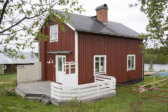

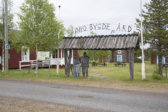
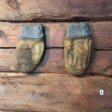
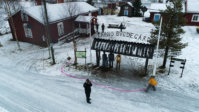
Residence-in-Nature: Mammas Hus i Laino består av två delar, en utställning på Marttigårdens hembygdsgård i Lainio och en på Norrbottens Museum. Utställningarna ingår i Luleåbiennalen genom Residence-in-Natures medverkan. På Marttigården blandades vi och vårt material in med befintliga bonader, bilder och bruksföremål. På Norrbottens Museum har vi med delar av Marttigårdens arkiv där interiör har flyttats in på institutionen och visas tillsammans med Residence-in-Natures flora, insamling med pågående processer och färdiga verk.
Konstnärer: Johanna Gustafsson Fürst, Ingvild Holm, Hans Isaksson, Åsa Jungnelius, Oscar Männikkö, Olof Marsja, Esko Männikkö, Gustaf Nordenskiöld, Lisa Torell och Markus Vallien. Grafisk design: Jonas Williamsson. Text: Lars-Erik Hjertström Lappalainen
Samarbetspartners och finansiärer: Norrbottens museum, Luleåbiennalen, Resurscentrum för Konst i Norrbotten, IASPIS, Region Norrbotten och Kulturrådet.


Berengo Studio is a lively, vibrant and innovative glass-production company that has been working with glass for over three decades.
The founder of the company, Adriano Berengo, has made it his mission to push the boundaries of glass-making, so that the work produced in his studio is beautiful, aesthetic and truly contemporary.
To achieve this ambition, Berengo Studio has, since the late 1980s, invited some of the most well-known contemporary artists to unleash their creativity and experiment with glass with Berengo’s highly skilled glass masters. These dynamic collaborations have resulted in huge benefits for both: artists have been able to see how their ideas can be transformed into extraordinary glass sculptures and craftsmen involved in the production of the work have subsequently developed new techniques to enable them to produce astonishingly cutting edge, exciting works of art.
Inspired by Adriano Berengo’s exceptional enthusiasm and energy, many artists have accepted the challenge to create contemporary glass sculptures in collaboration with Berengo Studio and many of these works are now in important private collections and public institutions worldwide.
Supported by The Swedish Arts Grants Committee



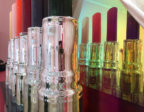
Computers have radically altered the ways in which type is being created and used. Until recently, the selection of a typeface and its size, weight and leading, among other details, was an area reserved for specialists, while the design of fonts was the domain of a select few. Today, anyone with access to a computer has the potential to produce effective visual material through the use of software which can combine type and graphic imagery. But computers themselves do not create quality typography; people do. There is much skill and knowledge required in the handling of type and the responsibility to use it well now lies with everyone using a computer for design.

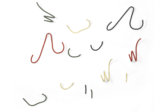

Hangers in 16 mm steel pipe. Available in three different models and four colours; wheat, tomato, spinach and sepia. The hangers were made for the restaurant at the National Museum, Stockholm.
LAST is a collaboration between Åsa Jungnelius, Gustaf Nordenskiöld and Fredrik Paulsen.
As long as there is water to drink, there will be cups to drink from. But the variation in form these cups can take is virtually limitless. In today’s globalized world, how can we produce products of flesh and blood? Products made with care, that are built to be used for a long time? Can artists and designers circumvent the corporate hierarchy of mass production and instead manufacture objects themselves?
The concept behind LAST is simple: purchase an object directly from its maker. No intermediaries, long journeys, questionable materials or sweatshop labour. All of the products in the LAST collection are handmade by the artist in his or her studio.
LAST is a pop-up experience, a shop that can appear anywhere, be it an interior design shop, a gallery, online, or outdoors. It’s a traveling design experience: while the shop’s essential structure remains the same no matter where it pops up, each iteration includes a unique design element to give it a distinct identity.
The LAST line is comprised of customized, one-of-a-kind pieces that collectively suggest integrity and the ability to last a long time. Not only are the products sustainable, but they work together to promote design that is slower, more personal, and more thoughtful. A LAST that will last.

Participating artists: Christian Andersson, Malin Bobeck Tadaa, Tommaso Bonaventura, OMMASO, Natalia Batista, Karin Ehrnberg, Ann Eringstam, Helga Hägerstam, Torsten Jurell, Tove Kjellmark, Markus Kåhre and Haruko Maeda.









Kosta Boda 275 year anniversary (1742–2017)
Åsa Jungnelius och Ulrica Hydman Valliens vägar har korsats mer än en gång. Båda representerar ett tydligt feministiskt och kroppsligt formspråk. Till konstnären Sven X:et Erixon slår hon en bro med hjälp av starka färger och ett aldrig sviktande temperament. Att målaren X:et också sysslat med glas vet få. I Bodas arkiv hittade Jungnelius helt oväntat en urna av honom från 1929 där han låter ormar ringla framöver glaset. Som en tidig Hydman Vallien alltså.
Sedan debuten på Kosta Boda 2007 har Åsa Jungnelius botaniserat bland de utpräglat kvinnliga föremålen. Hon har lekt med läppstift och nagellacksflaskor och hon har mer än en gång fått oss att häpna och kanske generas med sina expressiva manliga och kvinnliga kön. Bland glasformgivare har hon mutat in ett helt eget revir.
Nu återvänder hon alltså till Ulrica Hydman Vallien. Med henne delar hon ett slags paradisisk passion. Särskilt för mannen och kvinnan och men också för glaset som sådant.
Inför Jungnelius jubileumsäpplen, de är nio till antalet, ser vi en starkare glaskänsla än tidigare. Kan det bli mer glas än så här, tänker jag. Visst avbildar hon frukter och kön men först och främst är det GLAS vi möter. Levande, saftigt, förtrollande som i sagan. Ett material som inte liknar något annat och som i sina skönaste stunder överglänser det mesta.
– Jag ville att mina äpplen skulle kännas begärliga! Smaskiga och svåra att motstå. Precis som det var där i Bibelns lustgård.
Äpplen i glas har en lång tradition. En som idag är särskilt eftertraktad bland samlare är den fantastiska Ingeborg Lundin, som på 1950-talet och framåt skapade stora genomskinliga äpplen, sköra som såpbubblor.
Åsa Jungnelius frukter är, som sagt, av annat temperament och skapade på fri hand tillsammans med de skickliga hantverk- arna på bruket. Lägg märke till bettet! I Paradiset var det Eva som tog första tuggan, sedan Adam. Efter det blev ingenting sig likt. Människan varseblev sin nakenhet och utsatthet. Jungnelius äpplen är från samma träd. Inte förgiftade som i sagan om Snövit, men upplysande, nästan bländande. Glas som fått mogna i händerna på en som vet hur man gör för att gång på gång förbluffa sin publik.

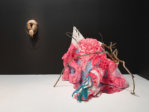
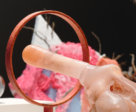
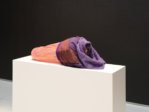
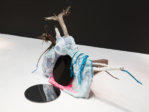
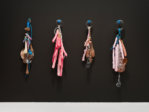
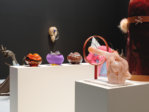
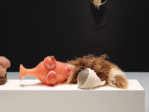
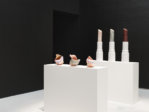




Sculptures based on the experience of a site, Mossahultagöl and a drum journey together with a chaman.
Part of group exhibition Walk the Line. Participating artists: Ingalena Klenell, Karl-Magnus Nilsson, Nina Westman, Fredrik Nielsen, Birgitta Ahlin, Sirkka Lehtonen, Ditte Johansson, Terese William Waenerlund, Åsa Jungnelius
The exhibition is produced by the Dunkers Culture in cooperation with The Glass Factory in Boda.


Participants: Maiken Bent (DK), Ester Martin Bergsmark (SE), Lea Guldditte Hestelund (DK), Preben Holst (NO), Stine Marie Jacobsen (DK), Åsa Jungnelius (SE), Hanna Sjöstrand (SE), Samaneh Reyhani (IR), Viktor Rosdahl (SE)
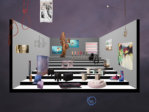
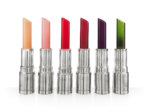
With works by Ana Kraš, Ania Jaworska, Åsa Jungnelius, Buro Belén, Claudia Caviezel, Gun Gordillo, Hilda Hellström, Johanna Grawunder, Katie Stout, Kiki van Eijk, Lindsey Adelman, Liz Collins, Marlène Huissoud, Mimi Jung, Mira Nakashima, Pieke Bergmans, Sabine Marcelis, Sarah Zapata, Sigrid von Lintig, Studio Berg, and Zohra Opoku.




All products in LAST's range are handmade by the creators in each studio, in direct contact with the material. As a buyer, you get a piece straight from the artist, without intermediaries, long journeys and sweatshops. The only ones being exhausted are ourselves.
LAST is a collaboration between Åsa Jungnelius, Gustaf Nordenskiöld and Fredrik Paulsen.
As long as there is water to drink, there will be cups to drink from. But the variation in form these cups can take is virtually limitless. In today’s globalized world, how can we produce products of flesh and blood? Products made with care, that are built to be used for a long time? Can artists and designers circumvent the corporate hierarchy of mass production and instead manufacture objects themselves?
The concept behind LAST is simple: purchase an object directly from its maker. No intermediaries, long journeys, questionable materials or sweatshop labour. All of the products in the LAST collection are handmade by the artist in his or her studio.
LAST is a pop-up experience, a shop that can appear anywhere, be it an interior design shop, a gallery, online, or outdoors. It’s a traveling design experience: while the shop’s essential structure remains the same no matter where it pops up, each iteration includes a unique design element to give it a distinct identity.
The LAST line is comprised of customized, one-of-a-kind pieces that collectively suggest integrity and the ability to last a long time. Not only are the products sustainable, but they work together to promote design that is slower, more personal, and more thoughtful. A LAST that will last.
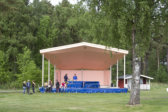
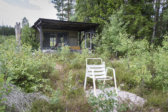
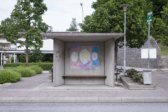
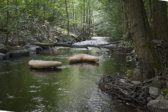
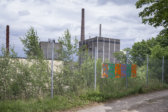
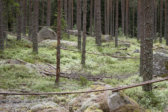
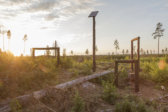
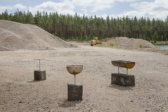
Participants: Johanna Gustafsson Fürst, Hilda Hellström, Klara Hobza, Åsa Jungnelius, Fredrik Paulsen, Jerszy Seymour, Ross M Taylor, Lisa Torell, Markus Vallien and Jonas Williamsson. Also participating: Axel Andersson, Mårten Björk, Erik Gärdvall, Karin Lindroth, Lisa Rosendahl, Jenny Silver, Emma Smith, Sara Söderberg and Heidi Vassi.
Residence-in-Nature was initiated by Åsa Jungnelius as a long-term collective art project. It was based on her own experiences of context-specific artistic work in a rapidly depopulating area where the post-industrial condition highlights a complex setting. The landscape in Småland is intimately linked with the material culture that gives the coordinates for our economic, social, political and ecological situation. The initiative coincided with the wish of the regional local authority to through artistic work find a durable form for an experimental Artist-in-Residence program directly linked to the local context.
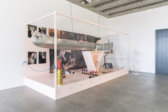
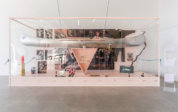
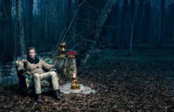

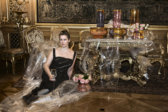

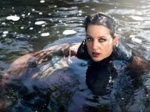
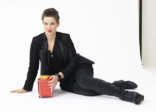

Of all the artists in the exhibition, Åsa Jungnelius is closest to the actual production, both to the glass objects and the contemporary notion of the Kingdom of Crystal. From the end of the millennium until three years ago she was affiliated to the Kosta Boda glassworks and made a breakthrough with Lipstick, an object still in production but currently manufactured in Slovenia. When the permanent collaboration with the glassworks ended, she moved her studio to her house in Månsamåla, where she now has her own glass furnace in the studio. Faced with the commission to participate in Moving Mass, she chose to work with the image of herself as the “young” designer, who would carry the future of glass production with a smart and skilled design style, incorporating a feminist message. In the diorama she has created in the exhibition, her professional history of the past ten years is portrayed through relationships with important people and events. The different variations of The Lipstick, from the ten years it has existed as object, represent a time axis around which the story is arranged. First as a sculpture, made by hand in 2005 and at that time representing a part of an artistic work on the art scene, and then in commercial production, where presently 176,000 items have reached the market. The period as in-house artist of Kosta Boda generated a number of objects for the home interiors, but parallel, she also exhibited on the art scene. She has deliberately moved between the different materials and social spheres. Jungnelius has always regarded the commercial production as an interesting way to communicate with people in their homes. In this work, she manages once again to find a way to both act as creative subject and at the same time be critical of the glass industry’s demands to create a mythical designer, with the status of a hero, in order to sell the products. Through her meta-work, Åsa Jungnelius disrupts the given positions by being both inside and outside the regarded phenomenon. We look into a pink dream of hard facts surrounding an artist’s struggles for the right to think and act freely in a globalized economy.
Text by Bengt Olof Johansson
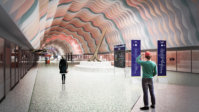
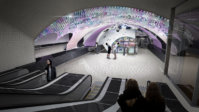
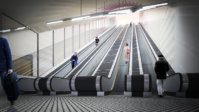
Subway station, Hagastaden in Stockholm (2016– on-going). Public art commission from FUT (förvaltningen för utbyggd tunnelbana), Stockholm County Council. In collaboration with &Rundqvist.
When formulating the artistic design of the station I have taken the whole station complex into consideration and treated it as one room. Departing from a feminist point of view, I envision the metro station and the cavity it forms as a gigantic sculpture, a shell. The shell's inside is the monumental cavern and it can be read as a celebration of maternity, but also of friendship, paternity, caring and the collective's defence of plurality. The metro is already a form of taking care, and investing in a public transport expansion is caring for future generations' social and ecological sustainability.
The public space that a metro station constitutes is a celebration of human cooperation and organisation. When invoking a feminist point of view, I mean this in a general sense as pursuing a just and equal relationship to one's fellows. An artistic reference for the work is the iconic sculpture installation "She: A Cathedral" by Niki de Saint Phalle at Moderna Museet 1966.
The escalator leads in to the subterranean ticket hall that is the opening of the shell. The platform is the inner universe of the shell and the escalator on the south side its rear. On that end there is a ticket hall above ground that becomes the shell's back. The parts of the station are connected to make one room through a clear and consistent visual identity created by tactility, patterns, light and colours. The aesthetics of the overall warm tone seeks to contribute to making the urban metro environment a safe and calm place. The design in the shell relates to, and is shaped after, the different modes of movements and flows of the travellers: waiting, walking and meeting. Sculptural elements give points of reference. These works are in a scale related to the human body. They create places of a more intimate character. The sculptures in the universe of the shell, the platform, are tales of human artefacts where common needs are described through examples like "The Well". Here water is a symbol, the source of life and everyday necessity. The sculptures also speak of the meeting of the urban with the interpretation of that which we call nature.
The design is formulated in such a way that it can be developed during the building process and adjusted to demands of accessibility and economy where design and technical solutions merge. The site that will host the new metro station will also influence the final design. Material is selected with the future upkeep in mind and through criteria based on sustainability, both in terms of functionality and aesthetics. The production and assembly of the sculpture will be coordinated with the building schedule for the station.
Art in the public space is communication integrated into our collective daily life. My artistic practice is characterised by a strong presence of the social room and a close relationship to the recipient. A room or an object only comes into being when there is someone to use it and activate the materials, in this case a traveller. This gives my practice its meaning. To work with public art that interacts with, and departs from, the human is an important and exciting task.
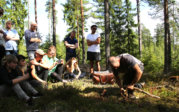
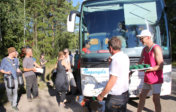
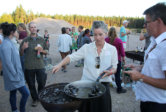
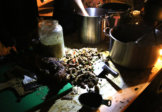
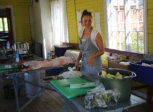
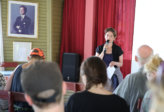

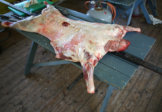
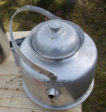
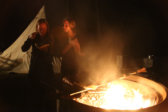
The symposium Scale 1:1 is developed in relation to the art project Residence-in-Nature, which takes place in different localities in the Region of Kronoberg during the summer of 2016. Residence-in-Nature takes as its starting point the landscape and its cultural, economic and political aspects. The symposium brings together the participating artists with invited guests to discuss what it means to work context-specifically as an artist today, and how art can make us think about concepts such as site, countryside and nature from different perspectives.
How do artists create methods for working in depth with a certain context? Can one bring the same method to different places and still claim to work with the notion of the specific? How do different time frames – to be a temporary visitor or a permanent resident – affect what becomes possible? What problems and potentials are involved when addressing local and global audiences at the same time? What new forms of artistic and institutional practices do we see emerging through intensified relationships with local contexts? What is the local anyway?
How is the perception of sparsely populated rural areas changing in a post-industrial present where the boundaries between the city and the countryside, and between nature and culture, are being re-negotiated? Has ”site” and ”the specific” become exotic and desirable properties – so called Unique Selling Points – for the experience of culture in an increasingly homogenized world? Or should we understand the growing interest for the context-specific in art as a form of tactile resistance against a generally abstracted existence?
The title Scale 1:1 makes reference to the working method used in Residence-in-Nature whereby the artistic process is shaped by the artists’ presence in a specific place for a limited time. The symposium employs the concept of Scale 1:1 as a general approach in order to ask questions about, and test the forms for, ”situated” knowledge production in relation to site, body and thought.
Preliminary list of participants: Johanna Gustafsson Fürst (artist), Hilda Hellström (artist), Klara Hobza (artist), Åsa Jungnelius (artist and Artistic Director Residence-in-Nature), Fredrik Paulsen (furniture designer), Jerszy Seymour (artist), Ross M Taylor (artist), Lisa Torell (artist), Markus Vallien (woodworker), Jonas Williamsson (graphic designer), Emma Smith (artist, author to The Practice of Place), Karin Lindroth (graphic designer and Artistic Director for The non-existent centre/Ställberg mine), Lisa Rosendahl (curator) Mårten Björk (teolog, editor for Subaltern) Axel Andersson (Historian and critic, author of Den koloniala simskolan) Heidi Wassi (Länsantikvarie)
Residence-in-Nature and the symposium Scale 1:1 are made with the support from Region Kronoberg and Växjö Kommun, in collaboration with Iaspis – the Swedish Arts Grants Committee’s International programme for visual artists.
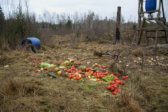

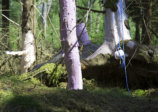
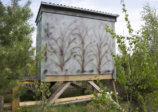
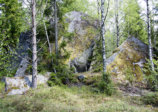
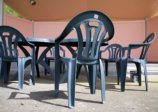
The concept is calibrated to the point of art through a questioning of art’s instinct to represent, its wish to tell stories. The image becomes palpable. The landscape is endlessly repainted, but if it is not re-connected to the body and the soil, it does not become disconcertingly familiar again. A bandstand in the nature-culture of a camping site is painted in intimate pink pastel, as though the backdrop for the gaze had a skin-like inside suddenly exposed. In a series of post cards, nature is arranged, used but cared for, by they who touch its openings, cavities, wounds, secrets, dreams and fantasies.
Text by Axel Andersson


At the core of the new pendant Riff, designed by Olle Lundberg, is a light engine that easily can be used to create a myriad of different designs. The inspiration for the light engine came from the car industry and how different models and designs share the same platform.
For Milan, ateljé Lyktan invited eight architects, designers, craftsmen and - women, as well as ateljé Lyktan's own Atelier, to explore the Riff light engine and create their own unique pendant. The project, named Riff Relay, resulted in nine spectacular pendants ranging from a glass pineapple to a leather hat.
Each pendant from the Riff Relay will be manufactured in a limited edition of ten each.
Contribution by Olle Lundberg, Åsa Jungnelius, Stefan Borselius, Ludvig Löfgren, Tham & Videgård, Henrik Schulz, Horisaki, Alexander Levin, Ateljén.
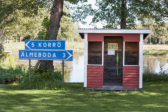
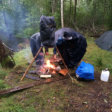

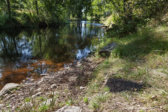

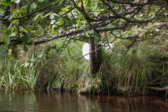
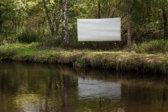
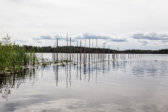
Residence-in-Nature is a long-term art project initiated by Åsa Jungnelius based on experiences of producing art work in an increasingly depopulated region, a place where post-industrial society has created a complex living situation. With the support of Växjö Konsthall, six cultural workers from different disciplines were invited to together produce art works in nature. Participants were Johanna gustafsson Fürst, artist; Fredrik Paulsen, furniture designer; Caroline Ringskog Ferrada-Noli, author and TV producer; Markus Vallien, wood worker; Jonas Williamsson, graphic designer; and Lisa Torell, artist.

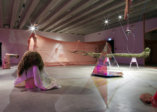





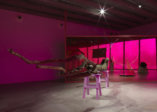

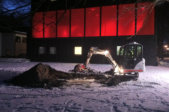
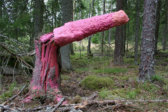
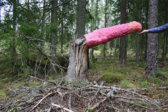
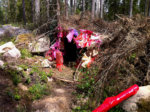
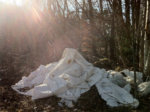
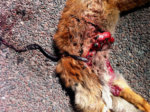
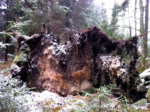
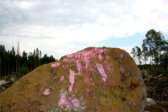
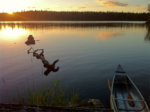
Åsa Jungnelius’s exhibition at Kalmar Konstmuseum is an exploration of gender and consumerism. It also considers urban and rural society, nature and culture, in a variety of materials.
In recent years Åsa Jungnelius’s oversized, glossy and enticing objects have attracted considerable attention both at exhibitions and in people’s homes. Moving from Stockholm to Småland and the Kosta glassworks, Åsa shifted her focus from the consumerism of the city to a consideration of the forest. In her work she views nature as something that is consumed. Småland’s forests are a key element of the economic system in the region; however, this can be brutally be thrown into disarray by the forces of nature. Forestry is often a very rough job and is still dominated by men. Using a forest seems to be yet another manifestation of consumerism, far removed from big city shopping, albeit still part of a constructed identity.
The “hole” and the “pole”, symbolic of female and male genitalia, are central themes in Åsa’s work and evident in such creations as her shoes, lipstick and obelisks: it’s found in her search for great depth, the hole that is powerful, sublime, reverent. In searching for a way to convey the power of the hole, Åsa Jungnelius worked with detonations in the forest. The work is documented in films which are shown in conjunction with the material that formed as a result of these detonations.
At the opening of the exhibition Åsa will create a new piece of outdoor art in Stadsparken. She plans to let a piece of construction machinery penetrate the ground: the machine’s pole will break the ground up to form a hole, it’s power remaining long after the machine has gone. Åsa uses a variety of materials in the exhibition ranging from wax, photography, and objects found in nature. Glass, which has always been her trademark, is present in the form of a glittering rainbow colored teepee, which is both a nod to the New Age as well as the contemporary view of nature and spirituality, contrasted with the notion of how the forest is a commodity.
Text by Katarina Sjögren
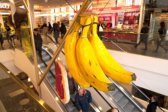
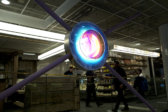

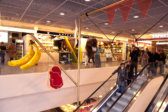
Blicken, biffen och bananen at Hötorgshallen in Stockholm. Material: brass, wood, cheep fur, plexiglass, textile, glass, enamelling, rope, metall and oil paint. Project manager: Lena From and Mårten Castenfors at Stockholm konst.

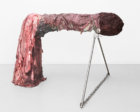

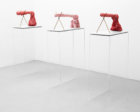
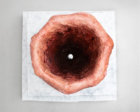
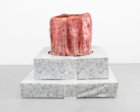
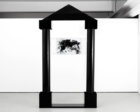
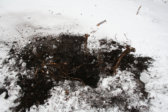
Material: vax, metal, plexiglass, textile, chain, photo of a dynamite explosion of the soil and glass. Fanzine by Alexandra Falagara. Special thanks to Marcus Vallien.
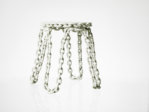
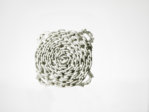
Initiated in 2010, The Fifty Fifty Projects came to life when Katja Pettersson decided to leave Front 2009, in order to move closer to the furniture industry itself and its intricate workings, while approaching things from a different perspective. Together with the industrial designer Anders Landström they created The Fifty Fifty Projects – a collaborative structure where the participants share knowledge, contacts and creative verve. The first collection was launched in Milan 2011.


This conference was created as a networking platform for the future, for artists, art managers and curators to meet and share experiences. The event is focused on developing cross-regional cooperation among independent art initiatives from post-Soviet countries and beyond. The main theme for the conference is how art can work as a propelling force for social progress in countries where cultural institutions are not necessarily something you can depend on. How do artists work with questions of social progress? What difficulties are there where the art producers work or come from regarding the artistic practice that needs to be circumvented?
The invited artists, curators and art managers from Sweden, Georgia, Belarus and the Republic of Moldova will talk about their strategies on how to operate in peripheral regions in relation to their own work. How could an art initiative operate autonomously? How can you organize production and develop art discourse in the context of a nonexistent art market? These are the existential questions that artists and producers of culture has dealt with for decades, where a notion of transition is a given context.
After the conference in Kalmar in September we counted ten newly created collaborations involving artists from invited countries. It is the intention of the conference and its contributors Kalmar Konstmuseum, KSAK Center for Contemporary Art, the Oberliht Association, with support from the Creative Force project of the Swedish Institute, that the meetings between the attendees will lead to new collaborative projects.
Speakers: Lado Darakhvelidze (GE), Lilia Dragneva (MD), Åsa Elzén (SE), Klas Eriksson (SE), Tatiana Fiodorova (MD), Åsa Jungnelius (SE), Johanna Karlin (SE), Giorgi Kevlishvili (GE), Max Kuzmenko (MD), Martin Schibli (SE), Daniel Segerberg (SE), Irina Solomatina (BY), Giorgi Tabatadze (GE), Vadim Tiganas (MD), Vladimir Us (MD).




In Memory of is the first in a series of planned large scale monuments by Åsa Jungnelius. In Memory of is a contemporary obelisk erected on a plinth of glittering flagstone, surrounded by gooey lumps and fat pillars cordoned off by black glass chains. The obelisk is shiny and black and has a large black patent bow around its middle. The obelisk reaches up skyward, too big for the room, touching the ceiling like an Alice in Wonderland or an oversized Christmas tree. The room is reflected in the obelisk’s blank, black surface. The obelisk, an ancient symbol of the sun, masculinity, fertility, power and the meeting between the Earth and the Sun. It was developed in the same way as Åsa Jungnelius’s earlier work Storstake: the phallus, symbolises masculinity, decorated with symbols of femininity and vanity: crystals, bows, decorations and furnishings. The private and the public sphere intermingle. The ancient, proud, symbol is raised with great difficulty, worshiped, shipped across the world like a spoil of war, erected again in the cities and the centres of power, meeting the language of girls’ rooms, consumerism and comfort, the vanity of the home and body.

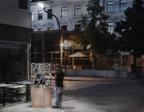

Outdoor sculpture at Sandgärdsgatan in Växjö. Concrete, glass, chain made of stainless steel and a lamppost that lights up when a person approaches the sculpture. In collaboration with Kosta Boda. Project manager: Ulf Agermark, Växjö kommun
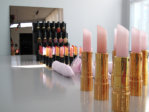
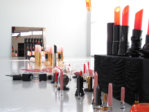





A conflict is taking place right now: “The male species is fighting war everywhere, and always with a clear conscience. This is in accordance with the tradition of eating meant and occasionally cannibalism. Men must kill to feed themselves, they must increasingly subjugate nature in order to live or survive, traveling to distant planets seeking that which no longer exists in the here and now; they must defend their patch of earth down here or up there. Men always go that step further, onwards in their exploitation, their appropriation without ever really knowing where they are headed. They take what they imagine they need without asking who they really are or what the connection is between what they do and their identity.”
Quotation from Luce Irigaray’s An Ethics of Sexual Difference (translated from the Swedish, Könsskillandens etik och andra texter, 1994). The instillation describes a state of war, an armed conflict, a personal political conflict.
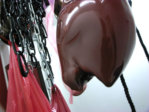


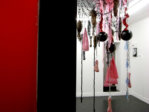
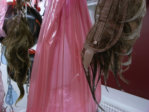


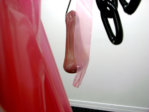
The exhibition Watch Out – I'm Out to Get You has a title inspired by the often obvious anger in feminist art of the 60s and 70s. Åsa Jungnelius presents the female genitalia in a new way, The Monster Cunt. The starting point for Åsa Jungnelius is the likeness to genitalia that monsters and aliens in horror movies often have and in genitalia as a common aesthetic reference to evoke fear. The Monster Cunt is an abstract Vagina Dentata that devours the phallocentric art room.
The Monster Cunt takes over the room from above, the glass objects that make up the mobile floats threateningly above the visitor who has to surrender to the dominance of the room. Chains and hooks penetrate the sexual parts and create a bond of fetish between body and object.
In the work “the Vagina” made 2004 Åsa Jungnelius showed and elevated the otherwise almost totally invisible female genitalia, in mold-blown glass and mirroring and with modernist sculptural shapes. The sex of a woman next to all the potent phalluses. The penises were made cute, decorated with bows or turned into lipsticks. Åsa overflowed the male attributes with symbols of femininity and elevated the vagina to an ideal shape but with the effect of censuring the anger. An anger created by being made invisible.
There is still a vast amount of penises in exhibitions while the woman´s sex still is not represented, too historically and culturally affiliated with shame or regarded too disgusting to be on display. Watch Out – I'm Out to Get You is the birth of the Monster Cunt, a sex ready to take over and demand submission.
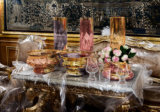
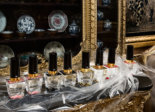

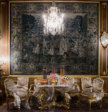

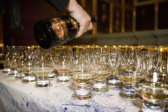
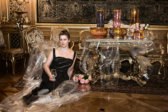
The launch took place at the The Hallwyl Palace in Stockholm.
Female attributes, evocative design and liquid gold – Åsa Jungnelius brings a new vitality to Kosta Boda
Åsa Jungnelius has already made a name for herself with her suggestive art glass. She uses stereotypes as her model and reference and is ever prepared to comment on them, usually with outspoken vigour. Her fascination with how people try to create an identity for themselves by shopping can be seen in her new Make Up collection.
Here she lovingly mimics a famous fashion pattern, which she uses as a framework for a new Kosta Boda design. The result is a set of party plates and serving dishes demonstrating that the gap between fashion and home furnishing is very small indeed. Other members of the collection are supersized, brightly coloured nail varnish bottles, proud symbols of our unrestrained consumption.
One of the first things she was asked to do for Kosta Boda was to design a collection for the dinner table—a whole new assignment for an artist quite unused to creating objects in which the prime consideration is function.
The result—and it’s an exciting one—is her Jackie collection. Gigantic bowls and vases in delicate pink, lilac and warm orange hues, and shapes recalling the opulence of big country houses. On top of this, bold brushstrokes of pure gold.
“For me, Jackie is a mix of two cultures, two different periods. The shapes refer back to the extravagant interiors of rich country manor houses and consciously mimic an ‘old-fashioned’ style, but with the painted gold it’s more rock-n-roll. It’s a type of action painting, if you like, where broad, bold brushstrokes make each bowl and vase unique.”
Jackie also includes a set of robust glasses whose top edge is artistically painted in gold, which appears to be running down over the glass.
“I like to think of these glasses more as goblets. They should be big and heavy. I like to distort proportions, to add an element of surprise. Things aren’t always what they look like. I also wanted the gold to ‘overflow’, rather like the drink that flows down into the glass. It should be somewhere between orderly and unique. That’s what brings the glasses to life.”


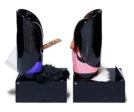

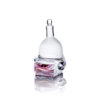

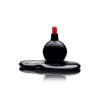



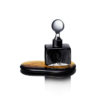
Handmade and individually sculpted in glass perfumebottels. Agonist is a Swedish perfumebrand launched in 2008. Today Agonist is regarded as one of the most sought after and unique brands within the international niche market of perfumes. With a distinct focus on details, artistic expression and raw material Agonist creates unisex fragrances in collaboration with renowned perfumers based on natural ingredients.
Her (H): How did you come into the project with Agonist?
Åsa Jungnelius (ÅJ): I was contacted by Christine Gustafsson and Niclas Lydeen, who are the founders of Agonist. It was originally their idea to create a perfume in limited edition in combination with an exclusive handmade perfume bottle. The first perfume was made in 10 bottles. The demand became quite large, so new perfumes followed; now we have approximately 100 bottles for each perfume. A wearer of an Agonist perfume owns a scent that belongs almost uniquely to her or himself, and the bottle can be used as small sculpture.
(H): Are you interested in perfumes in general?
(ÅJ): My main interest is how people construct their identity by consumption, what different attributes mean. Perfumes are definitely one aspect of this, and I have dreamt of making a perfume bottle. So it was a very happy coincidence when I was contacted by Agonist.
(H): Where did you get your inspirations from for those perfume bottles? And how was the design work done in practice?
(ÅJ): The founders of Agonist were drawn to a dark esthetics, playing with emotions such as being sad, jealous or burnt. We decided to illustrate the barren, harsh and decorticated face of the Scandinavian landscape using the perfumes and the bottles. For each perfume, we first write down the general ideas around the mood we want to convey. Often we send pictures, poems and songs to each other for inspirations. The perfume itself is created in Grasse, and from the perfume scent I then design the bottle. Usually I wear the perfume for some time, at the beginning it feels like I am inside the body of someone else. Quite immediately I start to make 3D sketches, I try to translate the feelings I get from the scent to 3D forms. It is like a game of associations to forms and colors. The entire work of designing one bottle takes a few months.
(H): What kind of associations do you get between scents and colors?
(ÅJ): It rests a lot on intuitions and is quite difficult to explain. I have worked a lot with various pink/rosy shades, because for me they symbolize the human body, and scents are definitely alluding to the body. My perfume bottles are bodies containing different scents, and one needs to use a stick to bring out the fragrance. I want the wearer to be involved. Sometimes the association is more obvious. For instance, for a vanilla perfume I used the white color in the bottle.
(H): Conventionally a perfume bottle is only a container, but yours also have a pedestal/base as part of the design, what is the idea behind that?
(ÅJ): I came up with the idea myself and it became quite characteristic for all the Agonist perfumes. My thought was to highlight the bottle as an object and elevate it as something noble.
(H): What is the difference between designing a perfume bottle, an art object and a wine glass?
(ÅJ): Since the context is very different, one has to think very differently. Even the starting points are different. A perfume bottle is a message of the scent inside. The fact that it is a container for something is important. Also, it is meant to be something private for the owner. While a drinking glass is quite social, it is something one can talk about. An art piece depends heavily on the specific exhibition. It is much more conceptual and touches more difficult questions. For me, both art galleries and department stores are highly interesting platforms.
(H): How much are you involved in the production of the bottles?
(ÅJ): The bottles are handmade by the Kosta Boda workshop in Sweden. We are proud to be able to promote a traditional Swedish craftsmanship. I am in the workshop and work closely with the craftsmen when the first bottles of each design are blown.
(H): How did you become interested in glass design?
(ÅJ): Essentially I am fascinated by how art is integrated in our social room, it exists everywhere: architecture, interior design, fashion, etc. Everything contains a message, and everything is made by materials. This is my main focus. The fact that I have gone to greater depth with glass as media is more of a coincidence. I am working with a wider selection of materials in my artistic activities, where I have more freedom.
(H): What is Swedish design to you?
(ÅJ): When I think of Swedish design I am thinking of Swedish fashion. We have some very good fashion designers in Sweden, like Ann-Sofie Back and Acne. They are young and edgy. I get a lot of inspiration by looking at the way other people interpret various materials.
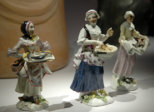
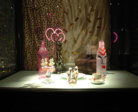
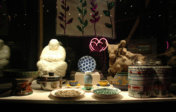
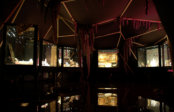

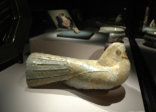
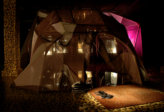
A collaboration took place between the Center for Women in Tensta-Hjulsta, Nationalmuseum and Tensta Konsthall, resulting in an exhibition that discusses the grounds of selection.
Curators: Altoum Alimoardi, Niger Dara, Micael Ernstell, Sara Isaksson-From, Åsa Jungnelius, Konst2 (Rodrigo Mallea Lira, Ylva Ogland and Jelena Rundqvist), Zobida Nadi Sharegh, Nasrin Rashid and Karin Sidén.
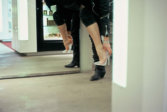
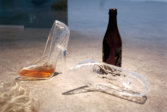



Can imitation gold give as much pleasure as gold won from a rock? Åsa Jungnelius is interested in what is thought of as genuine or false, in how the value of an object is created and who decides what factors will be used to determine that value? Frequently, Jungnelius uses stereotypically charged objects as her model or point of reference in order to puncture or draw attention to their conventional significance. Åsa produces her objects using everything from traditional glassmaking techniques to a more hobby-based approach. Jungnelius’ handicraft examines aesthetic hierarchies, shifts in values, bling, fashion, shopping and the social construction of gender roles.
